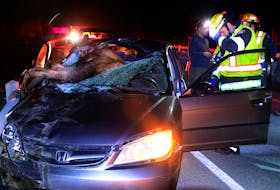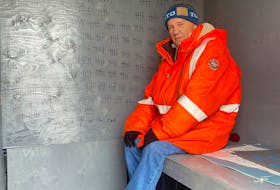
Laina Adams is encouraging people to get on the donor registry for stem cell donation. Since creating a support page for a local boy with leukemia, Adams says she has learned how stem cell donation is life and death to many people.
Laina Adams created the “Support for Connor McGrath” Facebook page a couple of years ago in support of a young boy from this province who has been receiving treatment for leukemia in Alberta. Adams is a family friend. Connor McGrath has been in the news for the strong community push that has gone on to raise money, support and awareness in aid of his fight against the disease.
RELATED STORIES:
‘Bubble’ and bone marrow transplant save toddler’s life
Family hopes rare disorder cured by marrow transplant
Adams is now hoping to encourage people to sign up for stem cell donation. Recently she has seen two posts on Facebook about Canadian babies who were struggling to find a match. A woman also recently contacted her about her nephew who died at 23 when a match couldn’t be found.
“So I thought, well, there’s over 5,000 people in the (Support for Connor McGrath) group,” says Laina.
She’s looking to encourage as many as people as possible in the group and beyond to commit to stem cell donation. Blood donation is wider known and Canada Blood Services still struggles to get enough. What makes bone marrow transplants so critical is that fewer than 25 per cent of patients who need stem cell transplants are able to find a match within their own families, according to the Canada Blood Services website. That means that 75 per cent rely on people who are on the donation list.
The donation list is a registry that’s shared worldwide in an effort to help save people from all over the planet. Canada Blood Services co-ordinates the collection and delivery of stem cells in Canada. It also works with registries all over the world to ensure patients everywhere have access to the stem cell treatments they need.
But it all starts with a donor that may be a match for them.
“Anyone that’s messaged me, they’ve all thought it was this extreme process,” says Adams.
“It’s only a kit you go pick up. There’s nothing major to it. It’s only a swab test.”
The test gets you on the registry so that you’re known as an available stem cell donor whose match can be checked against those people in need of stem cells. However, giving the stem cells themselves is not quite as simple as a swab test or even as giving blood.
The Canada Blood Services website spells it out clearly.
“Registering to become a stem cell donor means committing to be there when you get the call to give life. It’s a commitment no one should make lightly—but the rewards are immense.”
If a person takes the swab test and gets on the list, they may not ever get the call that somebody they are a match for needs their stem cells. If a person does, it’s not like giving blood but it’s also not as involved as a lot of people think. The bone marrow harvest takes place in an operating room while the donor is under general anesthetic. The cells are taken from the back of the pelvic or hip bone through a large needle that’s put through to the centre of the bone for marrow harvest. Blood Services says it’s repeated until enough marrow is taken and this amount depends on the donor’s weight. The website says that often about 10 per cent or about two pints are collected. The process takes an hour or two and the body replaces the cells within four to six weeks.
While the process requires more of a commitment than giving blood, Adams encourages people to see the result.
“For something so easy, for someone to lose their life is just horrible,” she says.
“I can’t imagine. I’ve got three kids myself and three step-children. What would you do?”
Unfortunately that’s a question people too often only consider seriously after it has happened to them. That’s is why Adams is looking to light a fire under people about how much of the world, including people right in this province, are in dire need of donors.
Related link: https://www.blood.ca/en/stem-cell/donation-process
Other stories by this author:








